
| VIDEOSPACE BUDAPEST |

born in Darmstadt / Germany in 1967
lives and works in New York, Berlin and Mexico City
His work has its roots in experimental film and performance. In his present videos and installations he creates artificial temporal and spatial connections between sites and events.
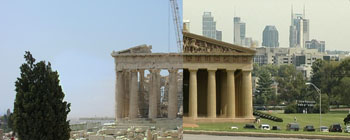
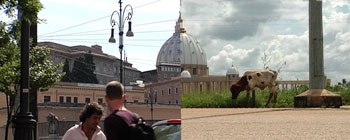
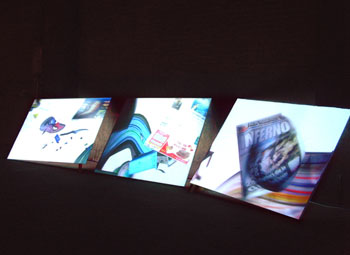
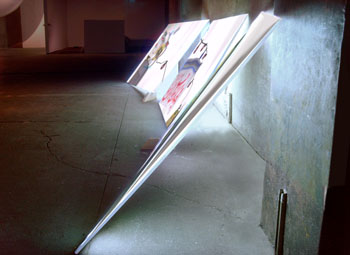
![Caspar Stracke: Z2 [zuse strip] in FUTURE CINEMA at ZKM, Germany 2002/2003 Caspar Stracke: Z2 [zuse strip] in FUTURE CINEMA at ZKM, Germany 2002/2003](stracke04.jpg)
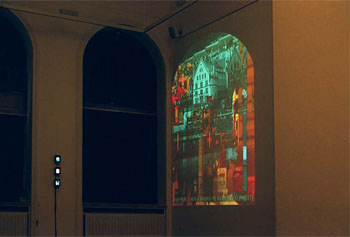
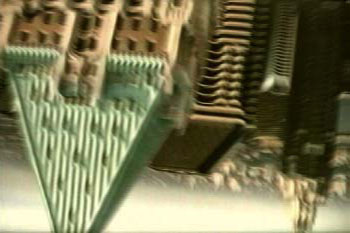
Caspar Stracke: Doppel / still from the video
 screen JPG 72 dpi / 111 KB
screen JPG 72 dpi / 111 KB
print JPG 150dpi / 111 KB
To use only with the aggreement of Videospace Budapest in connection with the art work of Caspar Stracke mentioning the following credits:
Doppel © Caspar Stracke, Videospace Budapest 2008
![]() Upcoming exhibitions
Upcoming exhibitions
![]() CV
CV
![]() Press material to download
Press material to download
Caspar Stracke is a German new media artist who works
in film, video and installation. He has exhibited internationally,
primarily in the US, Europe and Japan, and has
received a number of awards , fellowships and residencies,
including one at Eyebeam Center for New Media in
New York City. Stracke has also worked extensively as an
image journalist and video editor in the commercial realm,
and has acted as a curator in various new media projects.
His work revolves around a variety of subjects, most
recently architecture, urbanism and its socological implications. (...)
While all of his works but one are attributed to him alone
as author, he has used a variety of strategies that expand
the notion of artistic creation, particularly the idea of the
artist as sole progenitor of the artwork. "No Damage"
(2002) was assembled from clips of over eighty films that
featured the architecture of New York City. "Urban Particle
Supercollider" he originally began as a Flickr group,
where people in Teheran, New York City, and Seoul posted
images of urban street objects. In addition, comments
posted with the photographs were transformed into
numeric values that determined the position and trajectory
of the objects in the finished work, over which he exerted
no control. "Kubrick Space" (2001) was edited entirely
by machine; this work he even attributed to the machine
as the creator: The "SK 090 CED player" (CED Trilogy,
2001)
A number of works deal with the urban environment.
As "No Damage" is dedicated to the New York architecture
in cinema, "Locked Groove" (1997) collages closeups
of the movements of urban workers. Some of the
works establish connections between disparate urban
environments, suggesting that the urban environment has
transnational properties.
"Doppel" (2004), fuses images of monumental archietcture
and its exact replica, between Shanghai and Ivory
Coast. "Points of Presence" (2005) cuts and pastes
objects of one city into another.
Fusion and hybridity, concepts that computers address
with ease, appear in his work again and again. Both
"Doppel" and "Points of Presence" create new environments
out of images of different cities. Similarly, in "Urban
Particle Supercollider", Stracke combined images where
the street objects showed evidence of commonality. For
example, he fused garbage bins from two different cities
into a new, singular form. (...)
Stracke’s work exhibits evidence of a remarkable sympathy
that extends beyond humanity ("Locked Groove")
to the built environment and the specific objects within
it. In much of his work, juxtaposition, collaging, and
fusion give life to new forms from old. In "Bump & Bump"
(1986), the camera assumes the perspective of a basketball
as it careens around the court during a practice
session. And in "No Damage", created after 9/11, viewers
are asked to see buildings as evolving life forms,
with which we might have an ongoing, and intimate relationship.
New media are often referred to as "cool"
media, in contrast to the "warm" media associated with
craft, materials, and the human hand. In addition,
machines in general, and computers in particular, often
take on a menacing aspect in popular media, as in the
film "2001" (whose director, Stanley Kubrick, is referenced
in Stracke's work). But in Stracke's hands, or better,
mind, the computer is the tool that allows both
Stracke and his viewers to experience viscerally a sensual,
non-hierarchical, erotic animism, and not the totalitarian
dystopia that many fear.
Pamela Crimmins
ART CRITICAL January 2007
BIOGRAPHY
born in Darmstadt / Germany in 1967
www.videokasbah.net